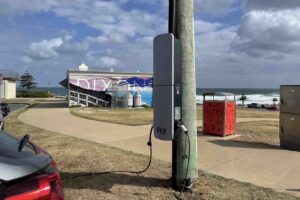Electrify everything! That’s the new mantra being promoted by a new think tank led by Australian inventor and US government advisor Saul Griffith, who started with Rewiring America push, and has now decided to do the same in his home country, Rewiring Australia.
Griffith and The Australia Institute have launched a new discussion paper called “Castles and Cars”, that outlines how much Australian households can save if they electrified everything, including the cars, their household heating, their water heating and their cooking. No word on the BBQ, though.
Griffith is not the first to come up with the electrify everything idea – although a decade ago he was promoting a concept called “Renewistan” – but he could be the most prominent.
When he first talked of the detail of electrifying everything in the Australian context, in January last year, he presented a series of numbers and costs so absurdly extravagant – $5 trillion for am Australian clean energy transition, and $850 billion just for households – that the AFR used it as justification to call for doing exactly the opposite.
We challenged those numbers at the time, because they were ridiculous. See: $5 trillion? For a business daily, the AFR has a lousy grip on energy numbers, and it is satisfying to see that Griffith has re-honed his calculations, and presented a much more realistic model.
And the good news is that an electrified household presents an unequivocally cheaper and less wasteful future for everyone. We sometimes forget exactly how much energy is wasted in the production and burning of fossil fuels – around two thirds – and Castles and Cars notes that the energy use of an average household could be slashed from 102kWh a day (including energy consumed in the petrol or diesel cars), to just 37kWh.
“The “average” Australian household currently uses around 102kWh of energy per day, and spends $5,248 per year on energy related costs,” the discussion paper says.
“Much of this energy use is due to the inefficiency of conventional fuels like natural gas and petrol for cars, which also create a large amount of emissions.
“These fuels are both expensive and highly polluting. The average household annually releases 11 tonnes of CO2-e into the atmosphere from its energy use activities.
“If we elecrify the “average” Australian household, with solar panels on the roof, a home battery, electric vehicles in the garage, and replacement of gas appliances with efficient electric ones, we can save thousands per year in household costs for the average home by 2030.
“The efficiency gains from new appliances and vehicles drops energy use significantly to around 37 kWh, and Australia’s world leading solar is cheap enough to power the house while saving money.”
What will this save? According to Castles and Cars, the average energy and fuel bills would drop from around $5000 a year to just $800 a year by 2030, as costs of EVs and batteries and solar continue to fall, and even more by 2035.
The problem is, most households cannot afford this capital investment up front – in EVs, rooftop solar and battery storage – so it urging rebates and financing to low income households in the early transition phase, at least until the cost of EVs falls to parity with petrol and diesel cars.
It says this needs to be a national priority, in the same way we treated Snowy, and the way we are treating Snowy 2.0. Or spending money on the Covid Jobkeeper.
And it certainly won’t cost $860 billion.
“If we begin electrifying our homes with roughly 3% in 2022, 15% in 2024, and 40% in 2026, the spending required to pay for the capital cost difference (or break even point) is predicted to be around $12 billion in total,” the document says. And the cumulative savings will be more than $300 billion by 2035.
“For context, that’s just roughly ~9% of what we are predicted to have spent on the COVID-19 response in the last two financial years, or roughly ~18% of our defence spending in those two years.
“As this electrification continues past the break even point, we predict gigantic economic savings for the Australian economy. This should be understood as an investment that returns enormous dividends to our households and the country as a whole, not as an expense that “costs too much.”
And it has important messages that everyone should understand. Namely:
“Our domestic economy can be just as vibrant while using less than half of the energy we do now – without sacriÞcing anything. The efficiency is in the electrfication of everyday items and in providing power via renewable energy.
“Electric vehicles running on solar or other renewable energy sources consume only 25-35% of the primary energy of their internal combustion engine alternatives. This is because engines are only about 30% efficient in burning petrol or diesel!
“Water heaters or space heaters burning natural gas use about 3 times as much energy as a heat pump for the same result. A heat pump is the technology that makes your refrigerator and your air conditioning work, and can be run in a reversible or mini-split system to also heat your home or water. Heat pumps use electricity to separate out the heat and the cold from air. They typically need only 1 unit of electricity to make 3-4 units of heat.
“Electricity produced using coal or natural gas power plants wastes a huge amount of energy. Many coal plants are only 25-30% efficient and natural gas plants 40-45%. Producing our electricity with renewables reduces these thermo-electric losses.
“A fully electrifed home powered by renewables will need less than 40% of the energy of its fossil-fueled counterpart. The Australian economy can run on far less energy when we embrace the electrification of everything.”










